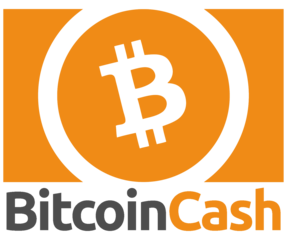
In the middle of 2017, a somewhat confusing situation occurred. Conflicting factions within the Bitcoin community had differing ideas about how the currency should proceed. The sheer volume of Bitcoin was becoming cumbersome, and a solution was required. One faction wanted to integrate a new Segregated Witness protocol to change how Bitcoin viewed the blocks within its own blockchain. The network would then increase the size of each individual block by about 80%, while slightly downgrading the security of the transactions within. The other faction sought a hard fork in the blockchain, and that faction ultimately produced Bitcoin Cash.

The Bitcoin Cash Project
Rather than a specific company or foundation, Bitcoin Cash was created out of a consensus from the anti-SegWit faction of Bitcoin supporters. Their belief that Bitcoin should exist as a digital currency fueled their desire to make that possibility a reality. The cumbersome transaction times of the original Bitcoin blockchain made it decreasingly feasible as a currency – even if it retained its status as a store of value. As such, a hard fork was initiated in the Bitcoin blockchain to create Bitcoin Cash.
Cryptocurrency Forking
To start, a fork is when a significant change is initiated within a blockchain. This could be a change in codebase, protocol or means of acquisition. A soft fork comes about when the system retains backward compatibility – the new system is treated as the same currency as the old, but with a different rule set. A hard fork is a complete schism from the original blockchain. The newly minted cryptocurrency is not recognized by the original blockchain, and from the point of the fork, the new currency runs parallel but separate from the original.
Bitcoin Cash
Bitcoin Cash set out to solve the major issues that were beginning to adversely affect the original blockchain. The first was block size, and Bitcoin Cash changed this dramatically. The new currency increased their size from one megabyte to eight. This substantially increased the amount of transactions that the network could handle, which in turn reduced the fees for each individual transaction. The transaction itself is also confirmed in a fraction of the time, which furthers the argument that Bitcoin Cash is a more effective digital currency than the original blockchain.
So why Bitcoin Cash?
Bitcoin Cash preserves the spirit of the original Bitcoin blockchain, in a format that is more usable in a real world environment. The same security systems are in place, with the block size limited to prevent outside attacks and breaches by bad actors – without the lowered security of the Segregated Witness protocol. There are multiple teams working to enhance and encourage adoption of Bitcoin Cash, and it has continued to hold value down the line from the hard fork, while not being absurdly priced to the point of being unusable.
But why not?
The same argument applies as a reason not to invest in Bitcoin Cash. It’s still Bitcoin, with all of the hazards and inefficiencies that the system has always possessed, even if they have been mitigated. Newer blockchains have developed that have an actual use case behind them, where Bitcoin and Bitcoin Cash both are intended to serve only as a form of digital currency. Their time at the top may be limited by upcoming currencies that are backed by actual products.
This is part of my ongoing series of basic primers for cryptocurrency. If you found it useful, interesting or just like my style - consider following me!
Previous primers;
A Litecoin Primer
A NEO Primer
An Ethereum Primer
Coins mentioned in post:
Downvoting a post can decrease pending rewards and make it less visible. Common reasons:
Submit